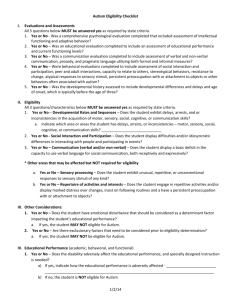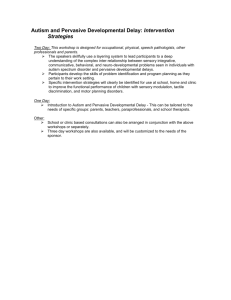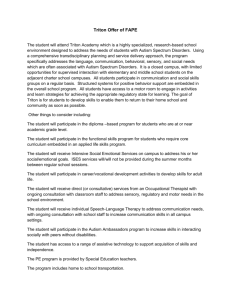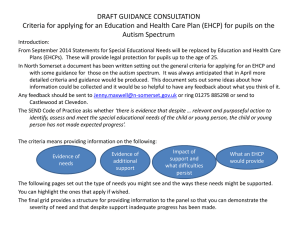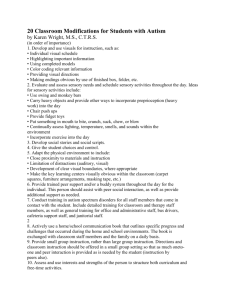MS Word format
advertisement
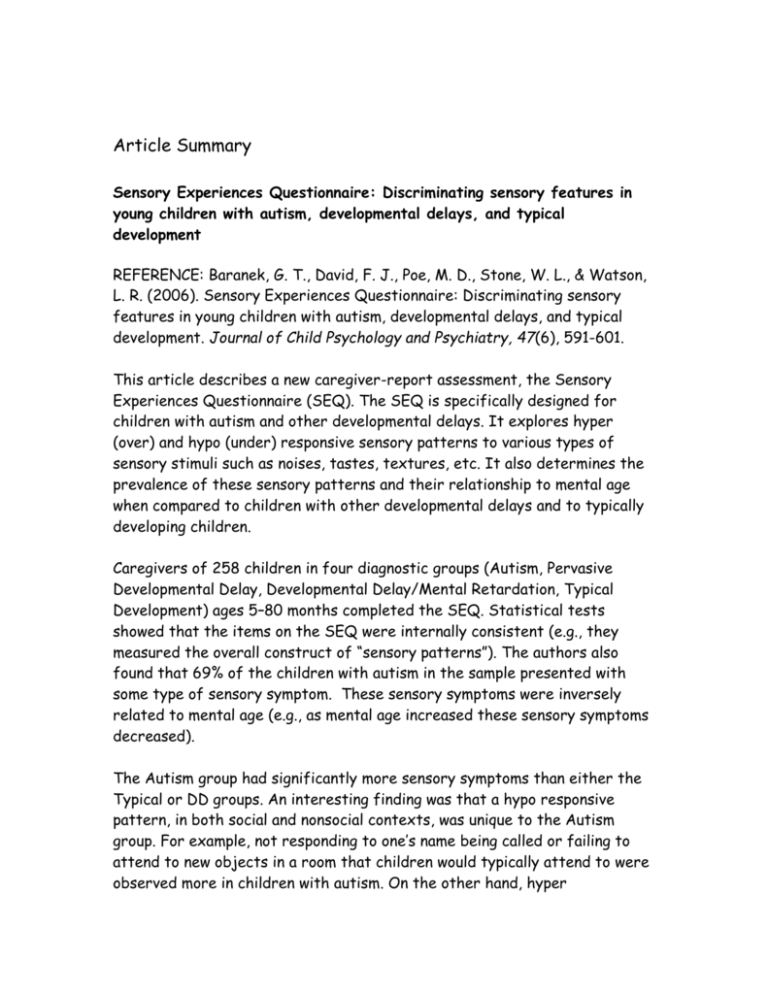
Article Summary Sensory Experiences Questionnaire: Discriminating sensory features in young children with autism, developmental delays, and typical development REFERENCE: Baranek, G. T., David, F. J., Poe, M. D., Stone, W. L., & Watson, L. R. (2006). Sensory Experiences Questionnaire: Discriminating sensory features in young children with autism, developmental delays, and typical development. Journal of Child Psychology and Psychiatry, 47(6), 591-601. This article describes a new caregiver-report assessment, the Sensory Experiences Questionnaire (SEQ). The SEQ is specifically designed for children with autism and other developmental delays. It explores hyper (over) and hypo (under) responsive sensory patterns to various types of sensory stimuli such as noises, tastes, textures, etc. It also determines the prevalence of these sensory patterns and their relationship to mental age when compared to children with other developmental delays and to typically developing children. Caregivers of 258 children in four diagnostic groups (Autism, Pervasive Developmental Delay, Developmental Delay/Mental Retardation, Typical Development) ages 5–80 months completed the SEQ. Statistical tests showed that the items on the SEQ were internally consistent (e.g., they measured the overall construct of “sensory patterns”). The authors also found that 69% of the children with autism in the sample presented with some type of sensory symptom. These sensory symptoms were inversely related to mental age (e.g., as mental age increased these sensory symptoms decreased). The Autism group had significantly more sensory symptoms than either the Typical or DD groups. An interesting finding was that a hypo responsive pattern, in both social and nonsocial contexts, was unique to the Autism group. For example, not responding to one’s name being called or failing to attend to new objects in a room that children would typically attend to were observed more in children with autism. On the other hand, hyper responsiveness was a pattern shared by the autism and DD group. For example, avoiding eye contact or being abnormally sensitive to loud noises were common to both children with autism and DD. The SEQ was able to characterize sensory features in young children with autism, and differentiate their sensory patterns from comparison groups. These unique sensory patterns might be used to explain some of the common core features seen in autism. Also, assessing these sensory patterns might aid in structuring individualized treatment sessions based on observed sensory patterns. What you just read was a family-friendly summary of the original article. For the full version of this article look for: Baranek, G. T., David, F. J., Poe, M. D., Stone, W. L., & Watson, L. R. (2006). Sensory Experiences Questionnaire: Discriminating sensory features in young children with autism, developmental delays, and typical development. Journal of Child Psychology and Psychiatry, 47(6), 591-601.
